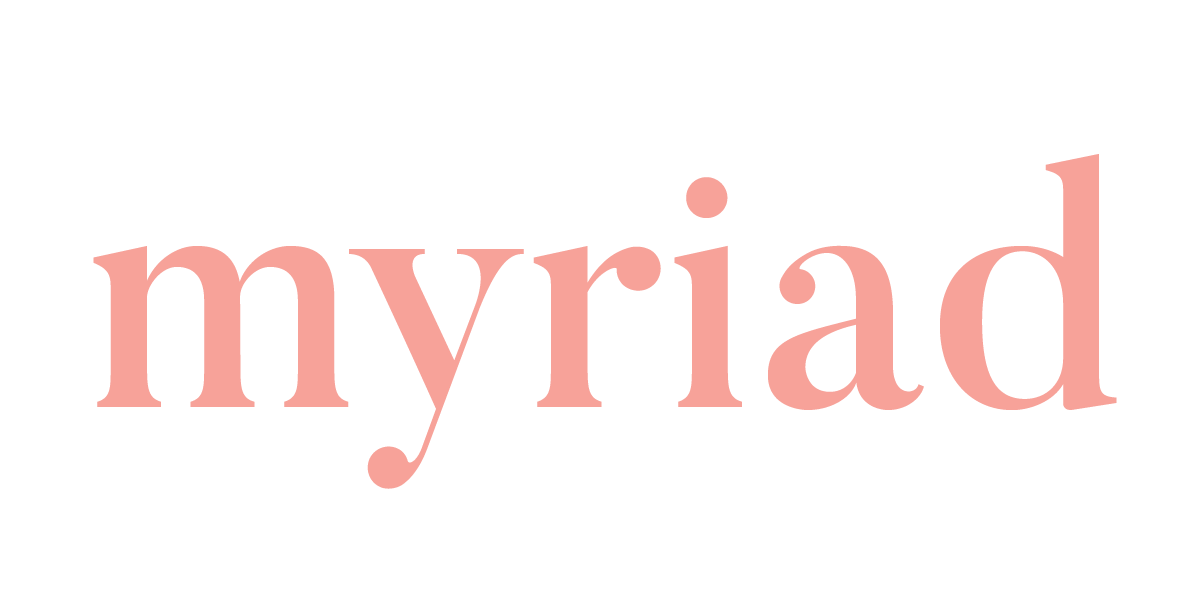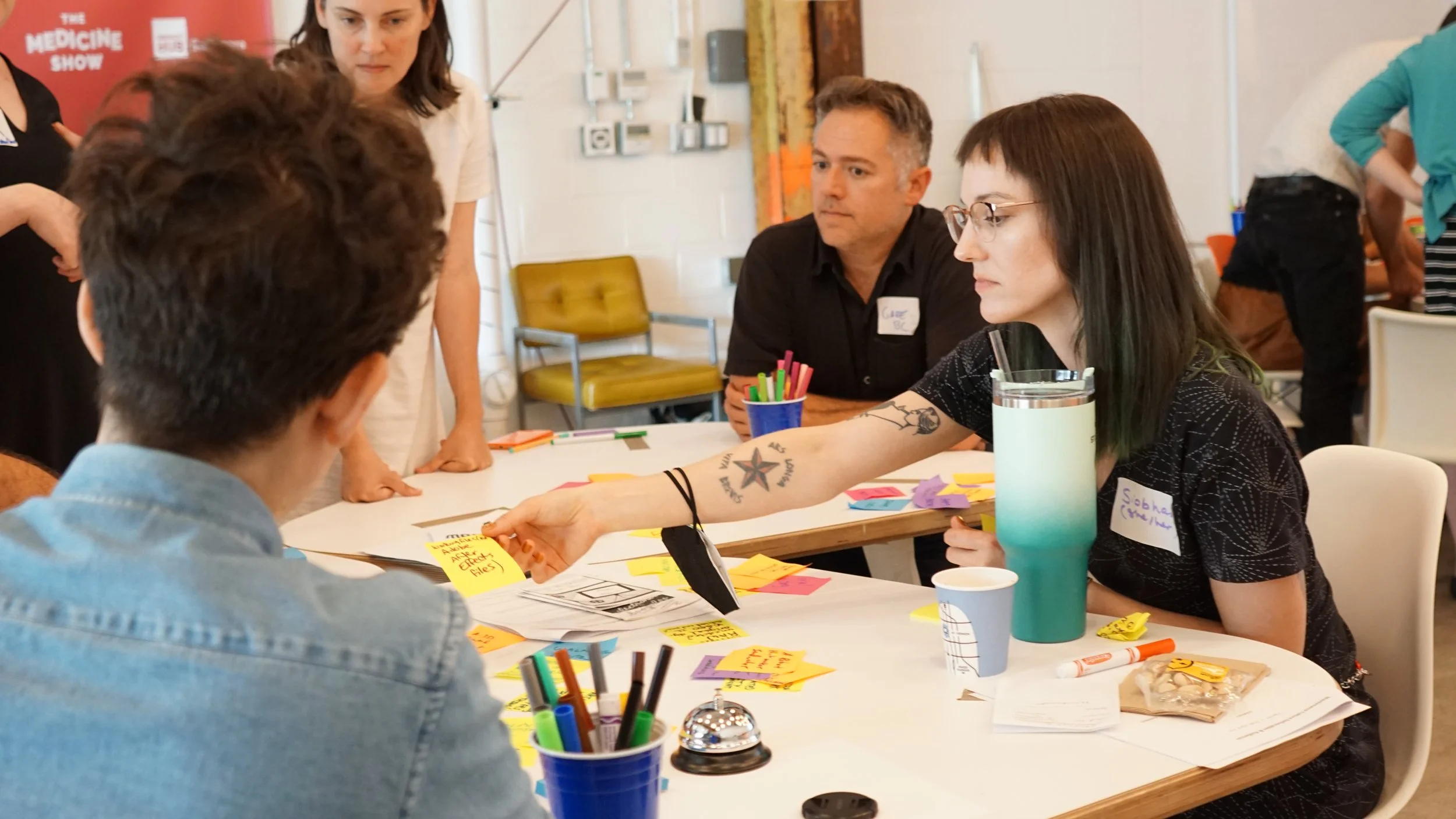Charrette Recap
Part 1: Connecting Creators and Maintainers
Jonathan Farbowitz, Jessica Bitely, Gabriel Barcia-Colombo, and Siobhan Hagan work together at the Charrette
On August 1 - 2, 2022 Myriad convened a gathering of video artists, digital creators, designers, archivists, librarians, and museum professionals to talk about preserving complex, born-digital, creative works at a design charrette (read more about what a charrette is in another blog post). The whole group was incredibly engaged, enthusiastic, and generous with their knowledge and time.
The results of this gathering will lead to guidelines for preserving complex, born-digital, creative works; workshops and skillshares across the US; and tools and resources to support institutions and creators.
Creators & Maintainers
Participants included people who create born-digital works, and people who maintain born-digital works. The creators provided insights about how they create digital work, how they help others maintain their work, and their concerns about future access to their work.
The creators all have portfolios you can peruse online, and their incredible work also provides a great illustration of the variety and types of works we’re striving to sustain access to through Maintenance Culture: videos, installations, web based art, and much more.
Darius Kazemi /Ashley Blewer /Joana Stillwell /James T Green / Gabriel Barcia-Colmbo/ Emily Delbridge
Many of the creators also work in or have experience in archives, libraries, or museums, so they brought their incredibly valuable dual perspectives to the conversations.
The maintainers group at the in-person charrette included people who work in libraries, archives, museums, and historical societies. The maintainers brought their expertise in sustaining access to born-digital, creative works at all different size institutions - including a large public library, public academic institution, small regional archive, and a large historical society. They ensured that the guidelines we’re drafting will work for many different types of institutions.
Fish Bowl Conversation
Fishbowl conversation with Maintainers discussing in the middle circle, creators listening in the outer circle
We started the first day with a fish bowl conversation, with the goal of building understanding across creators and maintainers of born-digital creative works. From a maintainer perspective, it was fascinating to learn more about the creators’ process, how they work to preserve their work, and how collecting institutions work with creators. Here are some quotes for a glimpse into the conversation, which was illuminating for both creators and maintainers:
_ _ _ _
On timeline differences between creators + maintainers
“I’m thinking about a journalist who I interviewed recently, she had been working with archives for many years, maybe over a decade. And she was just angry that her collections were not accessible. And she was like, they won’t be processed for like to five to ten years, and i was like, that’s great…That’s a fantastic timetable for any institution. But she was shocked that her legacy wouldn’t be more readily available….We are in such different spaces about what’s possible…we should be talking more about transparency.”
_ _ _ _
On long-term costs affecting creative decisions
“a big chunk of my work is Twitter bots…some of them have been interactive in the past where someone could tweet at the bot and then it would take that prompt and do something and respond with it. And when it’s interactive, you need some kind of server running on the back end that is listening basically. So it's very cheap, it’s like a cheap incremental cost of like pennies a month…but it is a real sort of issue for my bottom line to make something that listens because you’re paying for server time…it affects my art practice where I think to myself, no, you know what? I had this idea and it’s technically feasible but it’s gonna cost me like $15 a month to run this…that’s a lot of money over five or ten years. I can do this other version of it, that’s 50% of the functionality but it will cost me essentially zero. So I’ll do that instead.”
_ _ _ _
On artists needing to provide tech support
“I was pretty much IT support for the course of the exhibition, where they would call me, and they would just be like hey, something stopped scrolling, and things are repeating or the video stopped. And it’s just like me. Just building a one sheeter to be like here’s how you maintain the work.”
“It’s like my biggest nightmare, all the time to get a call from a gallery that’s like the piece isn’t working.”
_ _ _ _
The charrette was jam packed with generative, collaborative activities so we’ll continue this blog post series and add our recap of other activities like collaboratively drafting guidelines, defining the Maintenance Culture audience, and establishing the values that will guide our work.
Maintenance Culture has been made possible in part by a major grant from the National Endowment for the Humanities: Democracy demands wisdom.
Any views, findings, conclusions, or recommendations expressed on this website do not necessarily represent those of the National Endowment for the Humanities.



